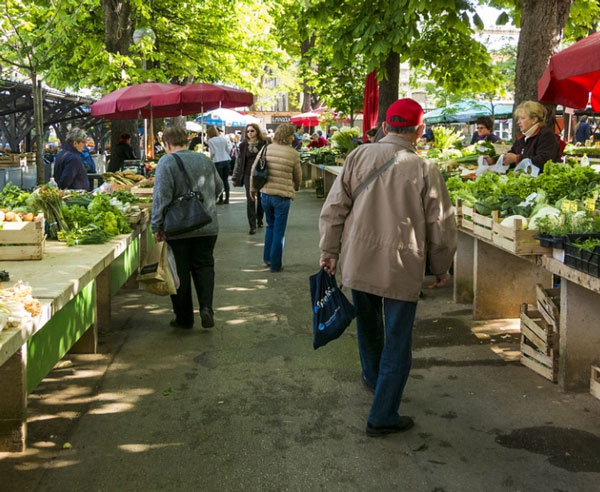We all eat; it’s a fact of life. What we chose to eat is up to us, whether we decide to hit a fast-food drive through on our way home or whether we head home after work to a pot roast and vegetables in the slow cooker. Why not make the choice to eat at least some locally grown food?
Growing produce yourself is one option. Nothing could be fresher than when you walk into your back yard garden, pick some lettuce, tomatoes and a cucumber, and immediately prepare yourself a salad. If you don’t have the room in your back yard, but want to try growing some produce, check into the local community garden scene. There are several community gardens open to the public, but space is generally limited so you should reserve your space early.
If you aren’t into gardening, Muskingum County is blessed to have several farmers’ markets and road-side stands that sell locally grown, fresh produce. Some markets have vendors selling locally raised meats. These markets and stands give the consumer the chance to meet the people growing the food they are purchasing. Buyers can ask questions about growing methods used, environmental practices employed, and even how to store and prepare the food purchased Through the exchanges at markets and stands, farmers are given the chance to educate consumers on the health benefits of their food and about their farming practices.
The warm weather we have had in the past week or so has me thinking of spring, and the delicious fresh food that comes with it! Some of the first things that are available are asparagus, rhubarb, and salad greens. While these items can usually be purchased at a grocery store year round, there are advantages to waiting until locally grown versions of the fruits and vegetables are available.
Most people agree that food grown locally, and in season, tastes better than food that has been shipped into our area. Compare the strawberries that are currently available in the grocery stores (that are shipped in from Florida or California) to those that you can buy locally in late-May or early-June. The local berries are usually smaller, and more expensive, but the taste difference is worth the wait and cost! Locally grown food is picked at the peak of ripeness, usually within hours of it being available for purchase. Food that is shipped in is picked before it ripens, thus reducing the amount of nutrients it contains. Less time in transport means less spoilage also.
Local food can create a sense of community and provide a social experience. I can’t go to the farmers’ market and get out in and out in under an hour because I stop to visit with everyone, even if I don’t buy their produce that day! Community gardens often function as outdoor community centers in some neighborhoods. People gather in the evenings to work on the plots, pick their produce, and visit with neighbors. I think that this sense of community is something most of us could use more of in today’s solitary, technology-driven world.
Shopping locally helps support the local economy. The funds are used by the local farmer to support their farm and possibly other employees. An economically stable farm preserves green space and keeps the land in production instead of it being developed into housing, shopping centers, or manufacturing sites.
It may be impossible to eat locally year-round in Ohio; after all, sometimes you just really want strawberries in February. But I encourage you to try to include more locally grown produce and meats in your meals this coming year. In the process you will be helping the local economy and environment.
Our annual berry plant sale is going on now through April, 26th. | Order Online Today! • Our annual fish sale is going on now through April, 26th. Pickup day is May 7th. | Order Online Today! • We will be on Live At Noon on Tuesday, April 23, 2024 with Melissa.
